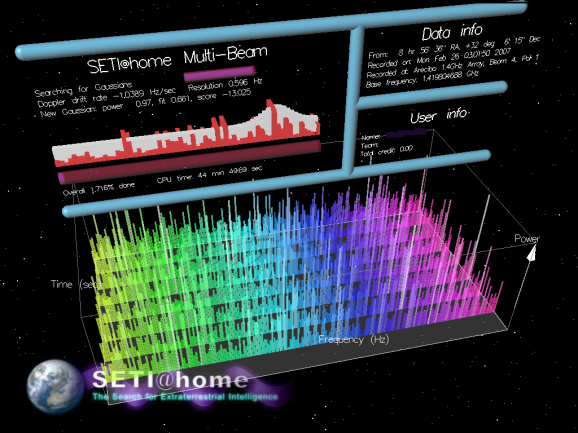SETI Predicts We’ll Find Intelligent Alien Life By 2040
This article is more than 2 years old

Scientists like to debate theories about aliens — are they out there? Where? Which planets are most likely to harbor life? If aliens are out there, why haven’t they contacted us? The truth is, no one really knows, and no one will until we come into contact with alien life (and unless, but I think this is a “when,” not an “if,” proposition). Especially intelligent alien life, which the chief astronomer from SETI (Search for Extraterrestrial Intelligence) predicts will happen around 2040.
I first became aware of SETI the same way as many people — by downloading the SETI@home screensaver that helps analyze radio signals. That program has now been augmented by setiQuest, which taps into the global community via a bunch of cool apps, such as the SETIsyncProb that allows users to sync radio wave detection ranges with the lifespan of those ranges to generate a “snapshot” of radio wave activity. SETI was one of the first programs ever designed to use and demonstrate the effectiveness of volunteer brainpower — it’s kind of like crowdsourcing, except easier (at least the screensavers are). But thus far, all those computers and all those radio waves analyzed by SETI and its volunteers have turned up nothing. Lack of evidence isn’t proof of nonexistence, though — far from it. And the better astronomers get at identifying and scanning star systems, the more likely it is that they’ll find something.

SETI’s Seth Shostak thinks that date might come sooner rather than later. At a talk at the 2014 NASA Innovative Advanced Concepts symposium last week, he said that he thinks we’ll find intelligent life elsewhere in the next two dozen years. Thanks to the Kepler telescope, which is back in business, we know that life is far more likely than we ever suspected, and that the universe is chock-full of potentially habitable planets. Right now, astronomers have reviewed data from thousands of star systems, but that number will, well, skyrocket, and once we’re looking at upwards of one million star systems, we might be dealing with “the right number to find something.”
The folks at SETI believe that intelligent aliens exist out there, and that those beings can transit electromagnetic signals, much as we do. But constantly scanning for those signals is tough, which is why SETI made the play to involve folks at home. SETI uses the Allen Telescope Array in California, which was supposed to have 350 radio dishes for this purpose, but only 42 have been constructed. Those dishes hibernate when funding is short, and then resume their work when times are more flush. Shostak knows that his 2040 prediction depends largely on funding.
And if we don’t find intelligent civilizations out there, the chances of finding simple organisms and microbial life are pretty good, especially given recent discoveries regarding the staggering number of planets with conditions conducive to life on some level. I got a new laptop last year and not downloading SETI@home was an oversight I’m about to correct. And who knows — after writing all these articles on alien life, maybe extra-terrestrials will deem me a worthy candidate and show up in my backyard, hungry for Reese’s Pieces.











